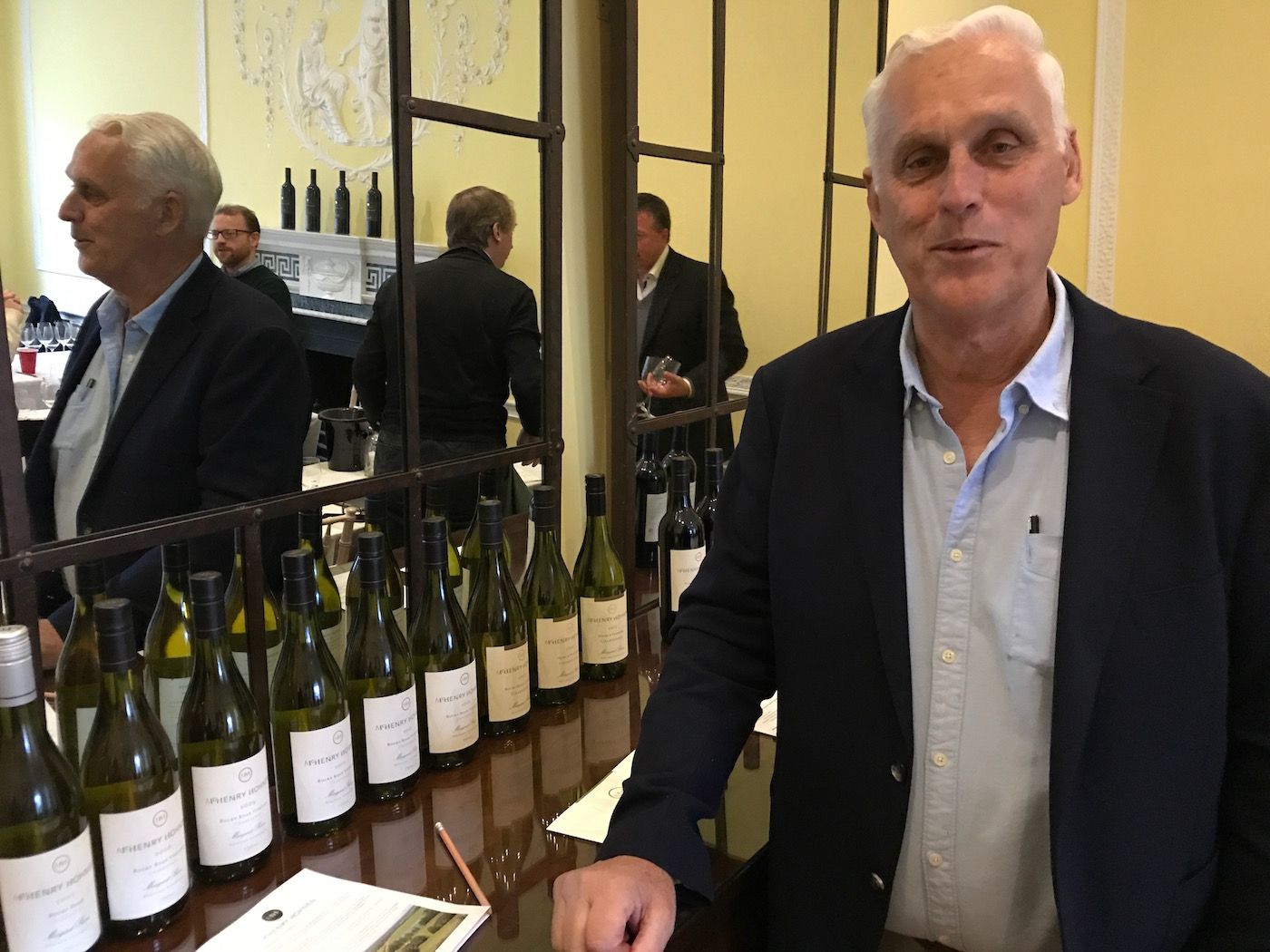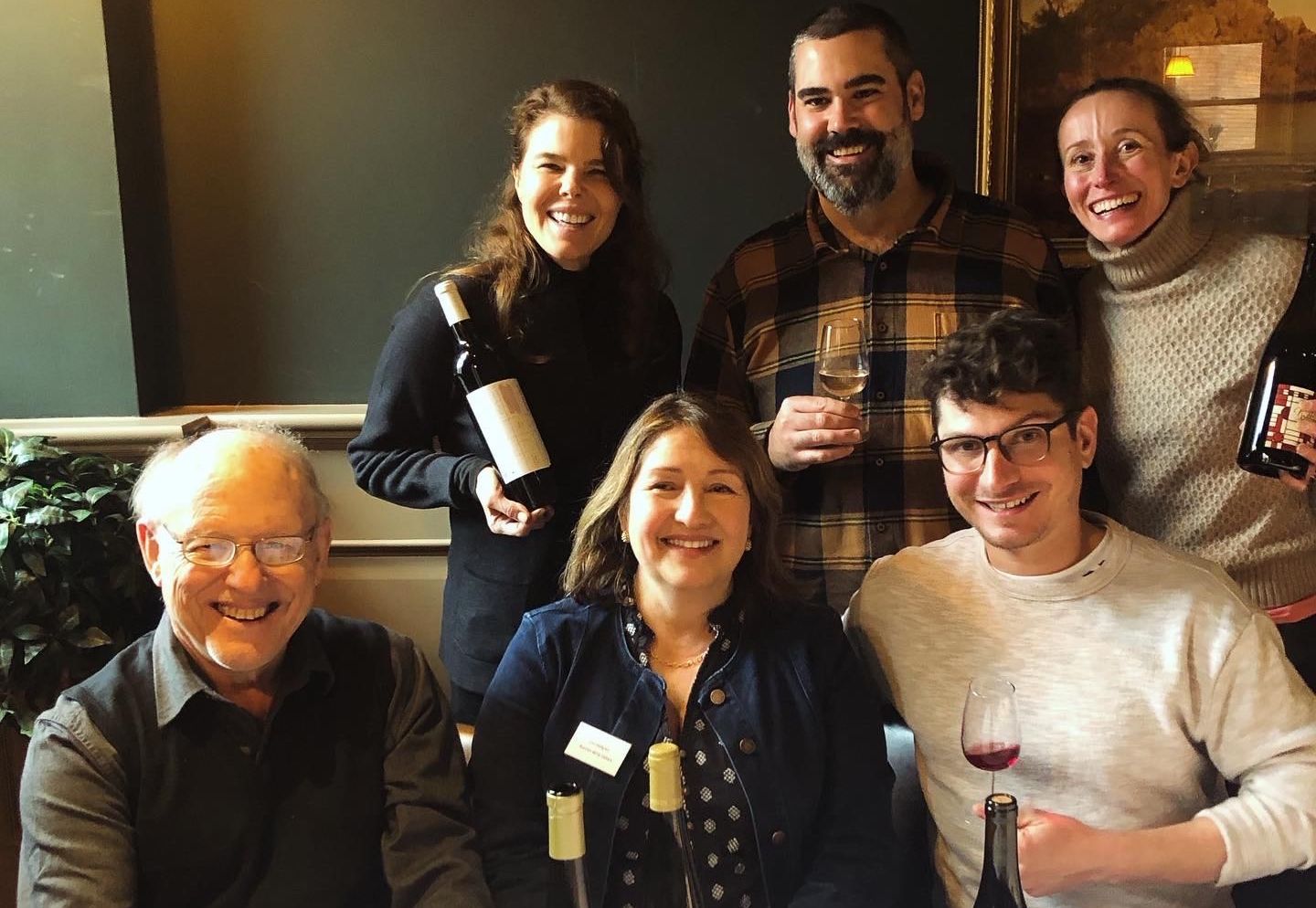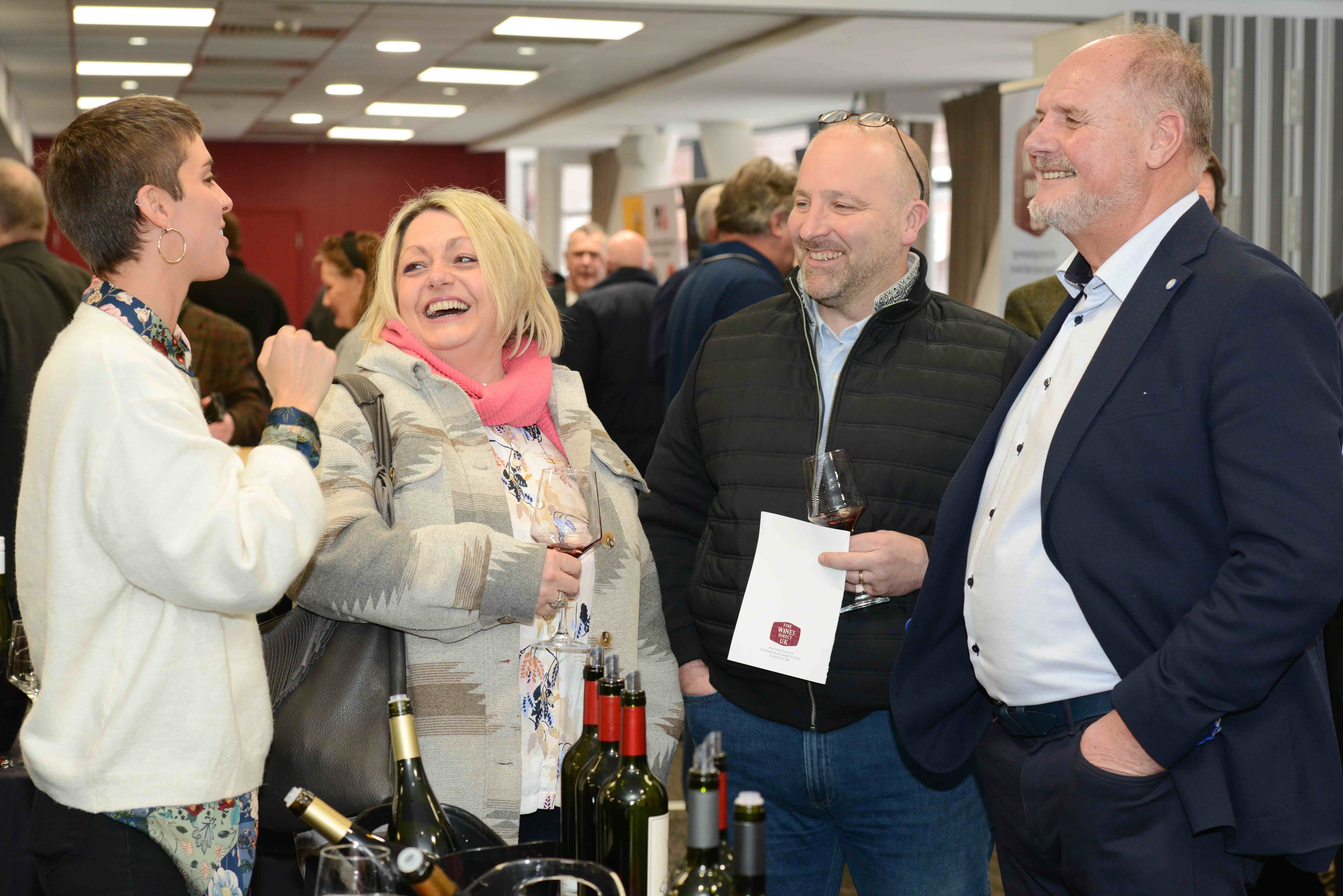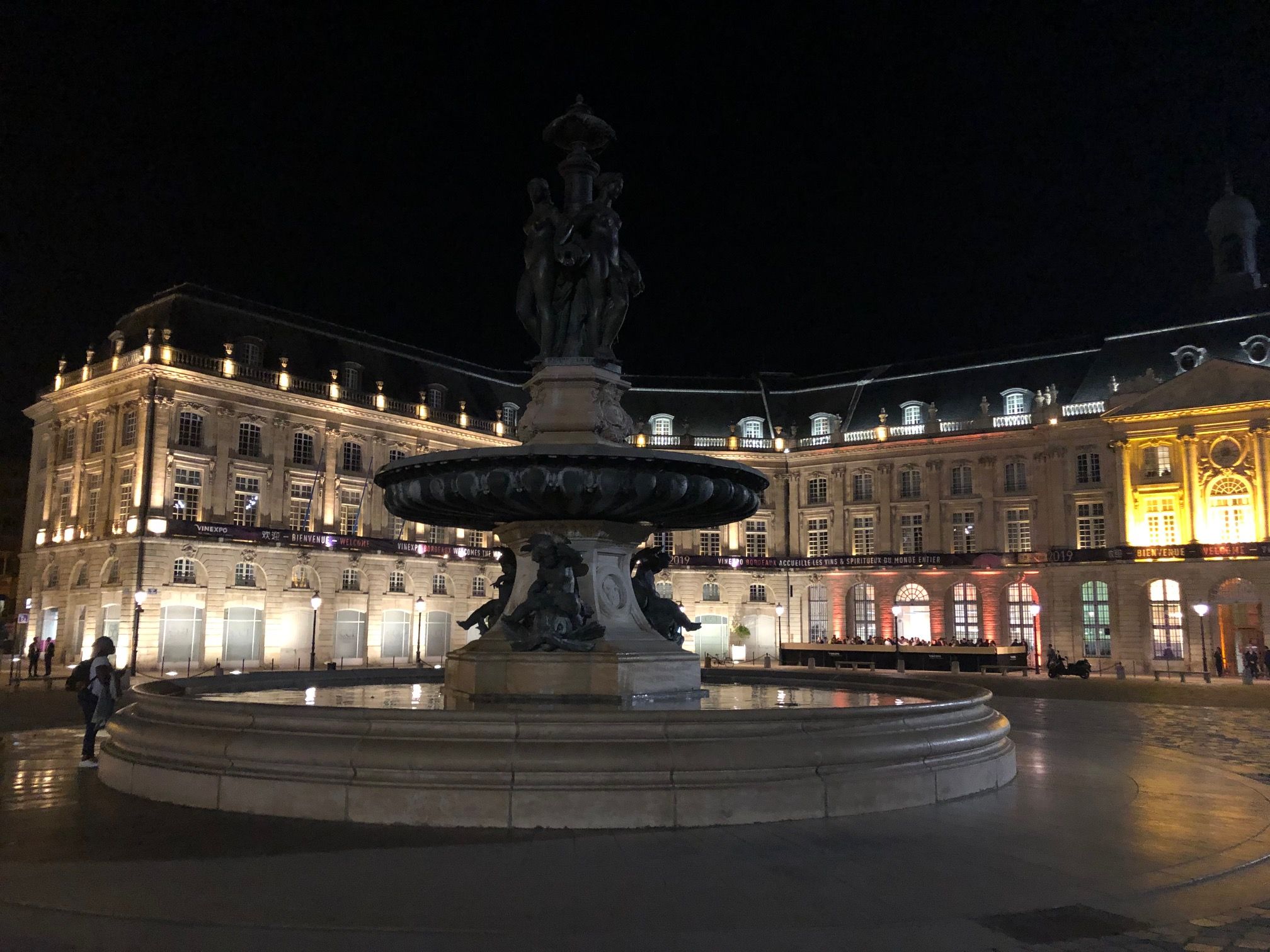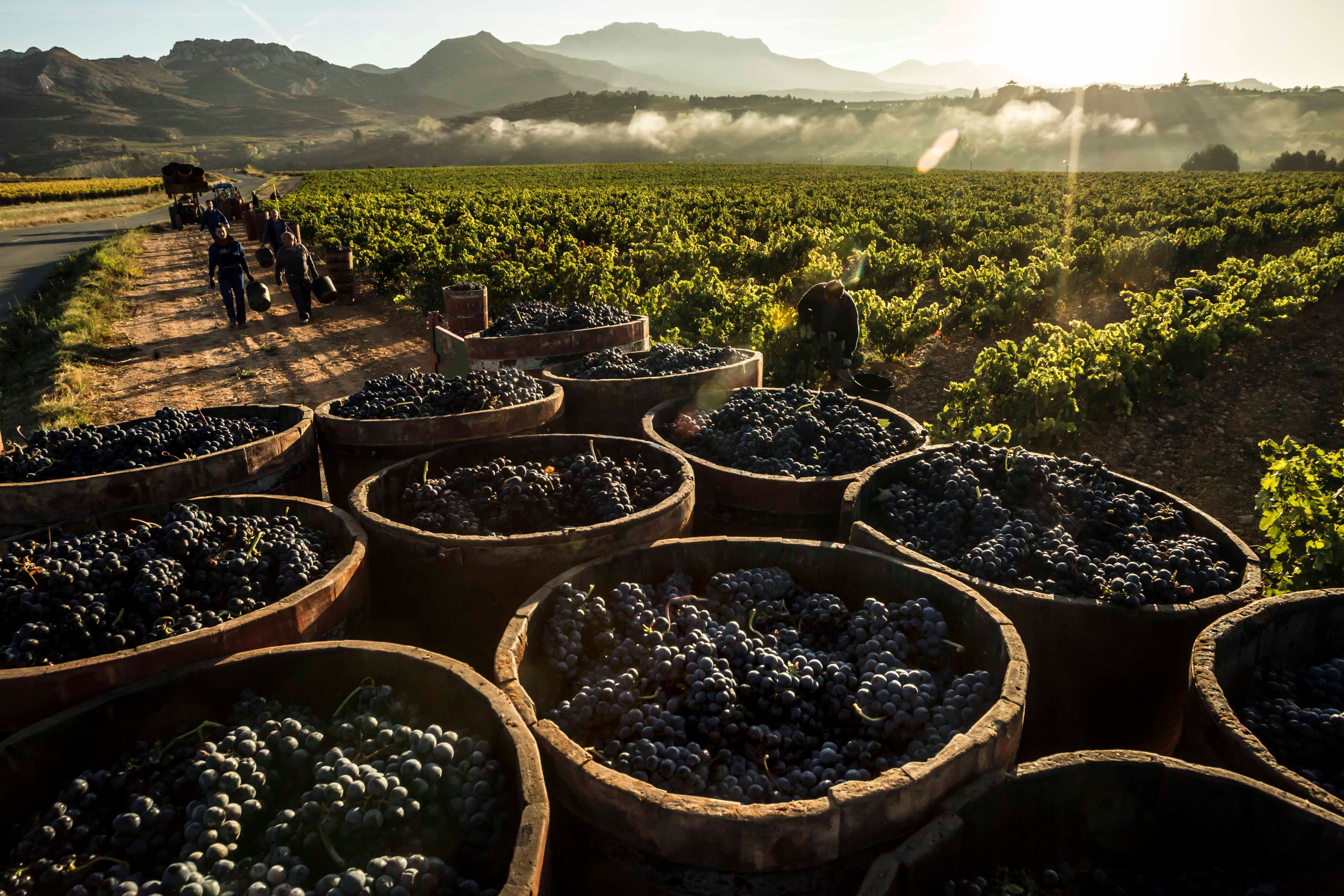The McHenry Hohnen tasting featured nine vintages of Hazel’s Vineyard Chardonnay 2007-2015, five of the Cabernet Sauvignon and Rolling Stone from the 2011-2015 vintages. It was the quality in particular of the Chardonnay that really stole the show, as Peter Dean reports.
“So Bono came over… a bit souped up you know, you could tell they’d all had a pretty good lunch, he does really like his wine, and he says ‘Don’t fuck around take me to your best wine’.”
Murray McHenry is recalling when U2 was playing a gig in nearby Perth and had taken the day off for a bit of oeno-tourism in Margaret River.
“So Bono holds up the bottle of Rolling Stone I showed him and he says ‘How did you get that? How did you get away with the name? And I told him that when we came to register the wine we found (unbelievably) that no-one in Australia had registered it so we did. So Bono goes ‘Great I need a few cases of that – this is Mick Jagger’s Christmas present’!”
Whether Rolling Stone, a Bordeaux blend is McHenry Hohnen’s top wine is a moot point, but it certainly consistently draws in the highest scores from Ray Jordan and the like. Myself and a group of other journalists are putting it to the test, having bravely travelled through virus-ravaged London to Asia House (no other venues available?!) for a mammoth vertical of this wine alongside two other extensive verticals of McHenry Hohnen’s top wines – both coming from Hazel’s Vineyard, one of best single vineyards.
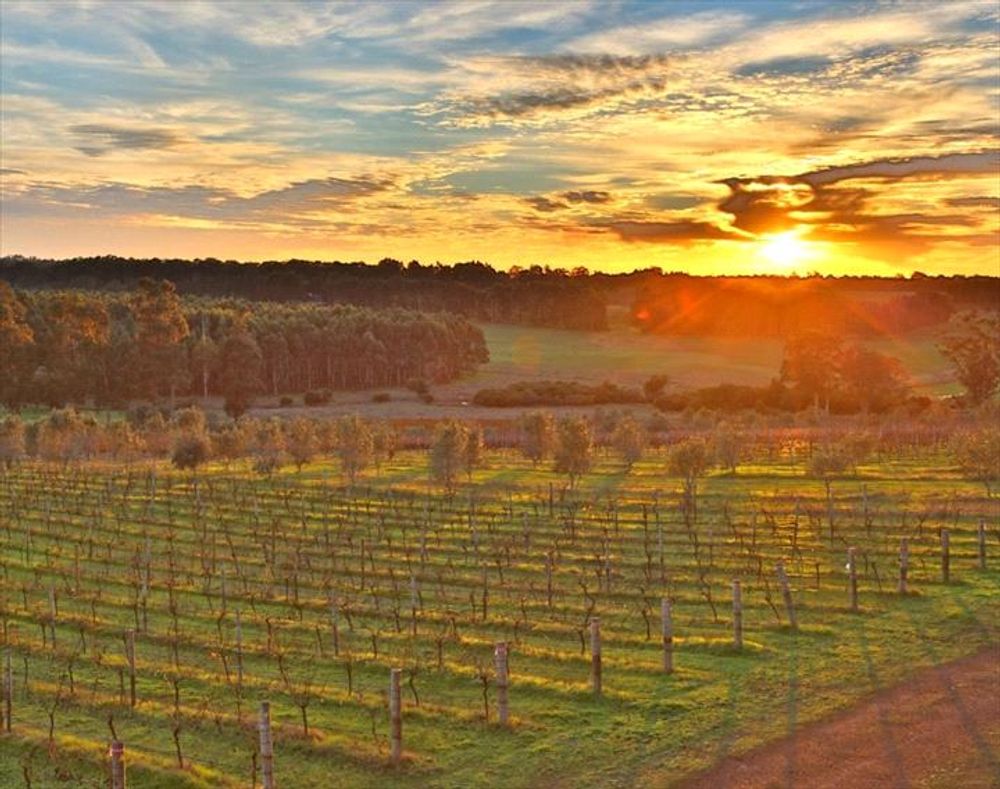
Margaret River is considered to be one of the finest grape growing regions in Australia, if not the world
It is some years since owner and co-founder Murray McHenry has been to London and the first time that importers Louis Latour Agencies has turned the spotlight on the winery’s single vineyard wines – in particular Hazel’s Vineyard Chardonnay, Hazel’s Vineyard Cabernet Sauvignon– and Rolling Stone in this way, effectively in a bid to reaffirm the pedigree of this site, and give these wines the attention they deserve.
Margaret River, nestled in the southwest corner of Australia, is regarded as one of the most pristine grape growing regions on the continent, and the specific location of McHenry Hohnen, close to the Southern Ocean, with a Mediterranean climate and ancient soils helps produce wines that have a consistent thread of zippy acidity through them and a brightness to the fruit.
The farming and winemaking here is key too; when Hazel’s Vineyard, their most southern vineyard, was planted in 2001, Murray McHenry and his brother-in-law David Hohnen wanted to prove what could be done in this region with biodynamic farming and minimum intervention winemaking.
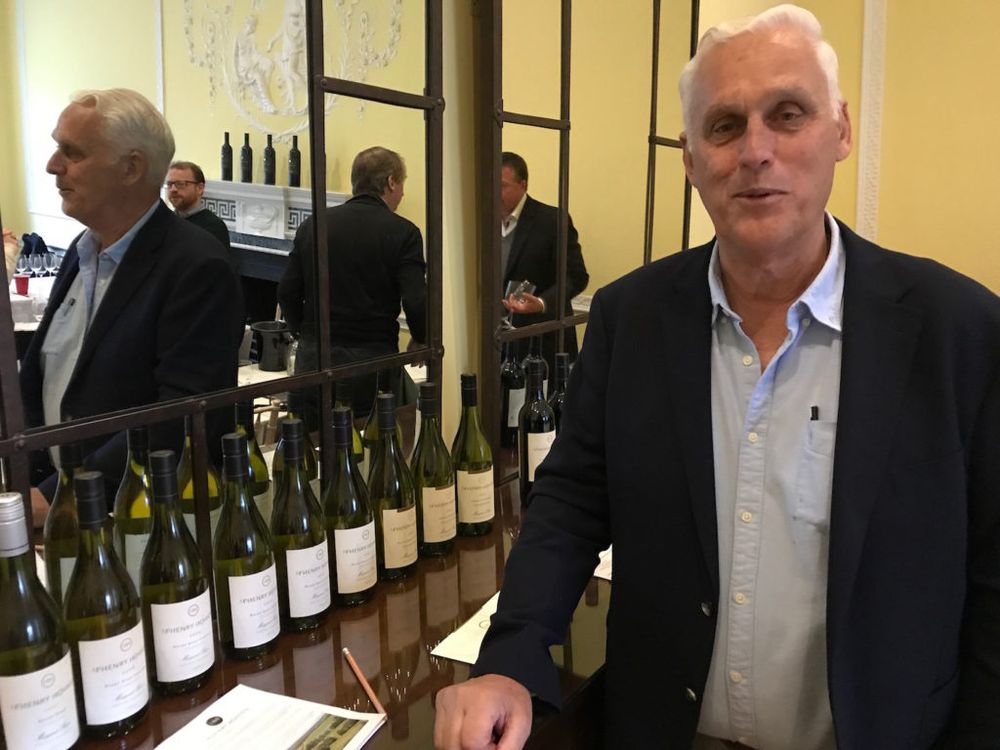
Murray McHenry, London, March 5, 2020
David Hohnen had previously set up Cape Mentelle with his brothers although he’s probably best known for establishing Cloudy Bay in New Zealand (both wineries now owned by LVMH). Cape Mentelle, though, largely helped build up the reputation of Margaret River in the UK, which was closely followed by other wineries in the shape of Vasse Felix, Cullen and Leeuwin Estate.
Although the region now boasts a much larger range of producers, varieties and styles, it was the work of these pioneers that put the region on the map – showing how refined Cabernet Sauvignon could be in Australia and also evolving a style of Chardonnay that harnessed natural acidity and was made with less alcohol and oak.
McHenry Hohnen grows 12 varieties of grape in total and produces 19 different wines, six of them Chardonnays (half being Single Vineyard) with some of its earlier experiments with Rhône varietals now pulled. Hazel’s Vineyard, that the tasting is largely focussed on, is 35 hectares in total with Chardonnay, Syrah, Cabernet Sauvignon and Zinfandel all grown there.
Today’s retrospective tasting is concentrating on the Chardonnay, Cabernet Sauvignon and the Bordeaux blend Rolling Stone, with all three flights concluding with the 2015 vintages, one of the last overseen by David Hohnen before he retired in 2017. Previous winemakers included Freya Hohnen (David’s daughter), Ryan Walsh (Freya’s husband) and Trent Carroll. In 2017 Julian Grounds took over as head winemaker for two years before taking the top job in Craggy Range. The head winemaker is now Jacopo Calli Dani, originally from Soave.
The three flights of wines for the day’s tasting are:
Hazel’s Vineyard Chardonnay 2007-2015
Rolling Stone 2011-2015
Hazel’s Vineyard Cabernet Sauvignon 2011-2015
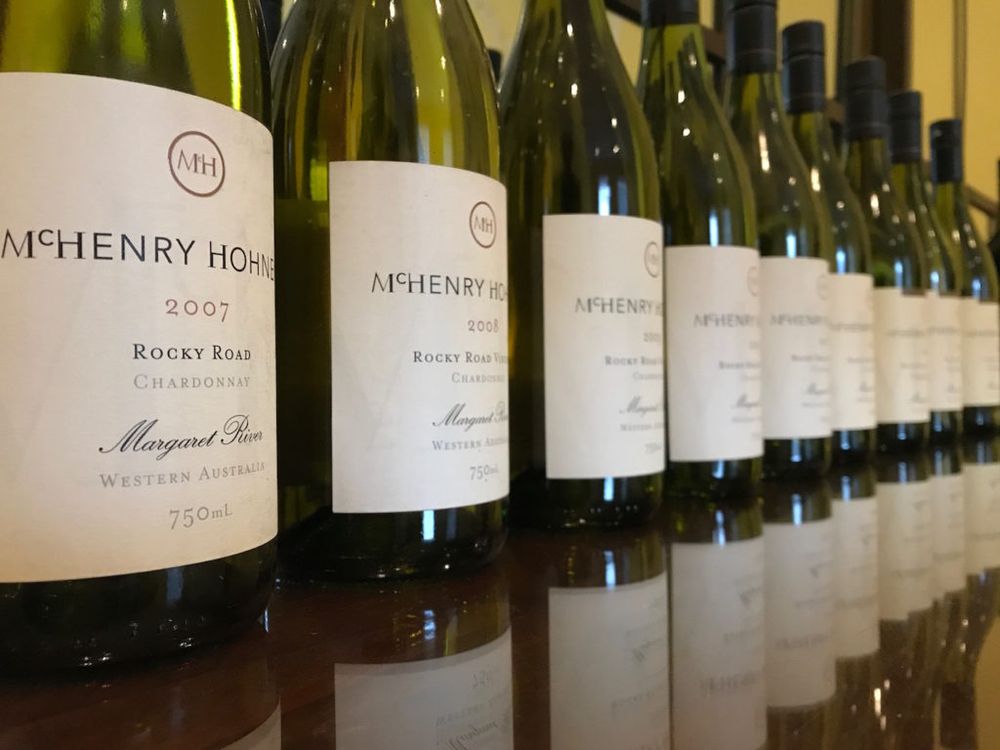
Flight #1
Hazel’s Vineyard Chardonnay 2007-2015
This wine was originally called Rocky Road until 2014 when it started to be called Hazel’s Vineyard Chardonnay, the same is true of the Cabernet Sauvignon, although the name change happened a year earlier in 2013. Viticulturist Mike Sleegers has taken the site from organic to fully biodynamic over the time span of this wine flight, the winery itself is also fully certified organic – yet to be reflected on the labels.
The vinification of the single vineyard Chardonnays generally follows a French method. The fruit is hand harvested, whole bunch pressed, with full solids and wild ferment occurring in barrique (25% new, the rest 2-3 years old). The wine then spends four months and another two in tank on full lees before bottling.
Personally speaking, if I had to match it with a French Chardonnay I would pick Chablis 1er Cru, this vineyard has terrific natural acidity, and the wines are citrus fruit-driven with aromas and flavours across the entire citrus spectrum – grapefruit to lime – with an interesting stony quality in there also.
All of the wines tasted fresh and pure with a beautiful expression of fruit throughout – this down to the racy backbone of acidity in the wines but also, one suspects, the fact that they are aged under screwcap. Although there is detectable vintage variation it was remarkably slight. Some vintages had more stone fruit – nectarine and peach – a touch more saline or, in the case of the 2007, more rounded orchard fruit with a lick of nuttiness on the finish, but these were remarkably consistent with the quality of the fruit becoming finer with vine age. The 2014 and 2015 were exceptional, with the 2015 and the 2007 being my pick of the flight. Both of these wines had a touch of struck match on the nose (something I don’t particularly like) but in both cases this blew off after five minutes in the glass.
Murray McHenry explained that their intention was to avoid making wines with “clumsy rich fruit” with 2011 being a sea change when they started picking earlier, but I would say all the vintages had a focus and pristine quality to them. The acidity was clear throughout all of the wines, with the fruit very much in evidence – creating a good balance. At £25-30 RRP these wines are exceptional value.

Flight #2
Rolling Stone 2011-2015
If one of the characteristics of the Hazel’s Vineyard Chardonnay vertical was the consistency of the wines, this was also true of Rolling Stone the wine that McHenry Hohnen describes as “the pinnacle of our red wine production.” Murray explains that this is an intended aim achieved by the blending process of the four Bordeaux varieties – Cabernet Sauvignon, Malbec, Merlot and Petit Verdot. The components of the blend are dialled up or down depending upon the vintage, as is the percentage of new wood during ageing, the greatest difference in the wines tasted being the 2011 which had no Merlot at all and 25% Petit Verdot.
Rolling Stone was first started in 2007 with six year old vines. As for the vinification process, select parcels of fruit are fermented in open stone fermenters with the use of indigenous yeasts. Some of the wines are left on skins post fermentation for several weeks to provide structure and a savoury quality. Others are pressed earlier for freshness and aromatic lift. Each variety is kept separate and aged in French oak barrels for 18 months, 30% new wood (40% with the 2015). The wine is then blended and kept for a further couple of months prior to bottling, unfined and unfiltered. All of the vintages tasted clocking in at 14.5% abv.
Personally speaking, I have never been a massive fan of this wine, finding the intensity and the concentration of the fruit a bit over-powering. But the wine has many fans and there are plenty of critics who lap it up and give it impressively high scores. Weirdly for a retrospective tasting I preferred the youngest vintage – the 2015, although the 2013 and 2014 are the current vintages in the UK.
Rolling Stone 2011 (50% Cabernet, 25% Malbec and 25% Petit Verdot).
Although this has terrific structure – firm acidity and a citrus edge to the fruit complementing the intensity and concentration – this was my least favourite of the five wines. The fruit tasted overripe and there was a confected, cough syrup note. Its eucalyptus and leathery notes signalled its evolution.
Rolling Stone 2012 (28.5% Cabernet, 28.5% Malbec, 28.5% Merlot and 14.5% Petit Verdot).
Plenty of ripe fruit, sweet blackcurrants, cassis, blackberry. Tannins are still all present and correct and quite punchy given this is an eight year old.
Rolling Stone 2013 (38% Cabernet, 25% Malbec, 25% Merlot and 12% Petit Verdot).
Again, this feels like such a young wine, a reflection of the acidity that can be achieved from the terroir. On the nose this is the most Bordeaux-like vintage, with considerable finesse. The tannins are more round than the 2012 and feel youthful. Powerful finish.
Rolling Stone 2014 (48% Cabernet, 20% Malbec, 20% Merlot and 12% Petit Verdot).
This is a massive wine, huge structure, mouth-puckering tannin and very lean, presumably on account of the high percentage of Cabernet Sauvignon. Well made but perhaps left alone for a few years.
Rolling Stone 2015 (36% Cabernet, 27% Malbec, 27% Merlot and 10% Petit Verdot).
Attractive, fine nose, creamy blackcurrant note, almost Chewit, herbal note. Tons of black fruit on the palate as you would expect, with a sweet cedar wood element. Even though this has many years to run, it was my favourite of the vertical.
Flight #3
Hazel’s Vineyard Cabernet Sauvignon 2011-2015
In terms of its winemaking, the fruit has partial wild fermentation in an open stone fermenter. A varying percentage of the grapes is left on skins for several weeks, the rest less so, before all of the fruit is sent to mature in French oak barriques (20% new) for 14 months. No acid, tannin or nutrient is added with the wines 100% Cabernet Sauvignon, all unfiltered and unfined. All of the five vintages were 14.5% abv.
2011 and 2012 were labelled as Rocky Road Single Vineyard Cabernet Sauvignon, with Hazel’s Vineyard Cabernet Sauvignon showing on the label from 2013 onwards. The current vintages in the UK are 2012 and 2014.
The vertical on the day which had the least vintage variance – or was that down to having just tasted five Rolling Stones? This is a bold, structured style of Cabernet Sauvignon, high in tannin, alcohol and body with medium acidity and a stony/ gravelly quality that is quite typical of Margaret River. 2014 was my favourite vintage with nice nuances of blackcurrant leaf, dried sage and forest floor accompanying the cassis and black fruit.
All of the McHenry Hohnen wines are imported and distributed in the UK by Louis Latour Agencies. The 2012 Cabernet Sauvignon had just sold out at the time of posting.
